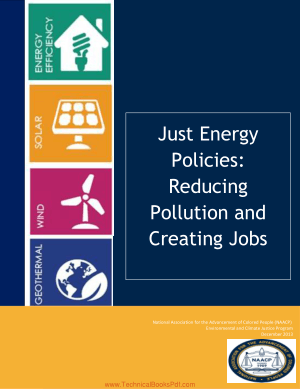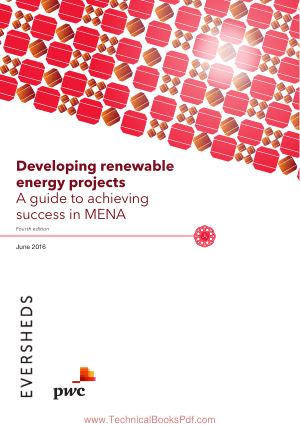Preface
Archimedes said, “Give me a place to stand and I will move the world”. The future
technologies based maybe all on light will let as perhaps say: “Give me the light
and the world will turn”.
This book gives a personal view on materials science, electronics, photonics and
future solar energy devices. Based on the similarities between electronics and
photonics and on the new advancements on solar energy and photonics devices, this
book tries to expose the new trends in science and future research axis.
If we have materials, light, life and intelligence, we can construct a world.
Looking back on the achievements of the last hundred years we remark that on the
basis one material: “sand” or “silicon dioxide” the common efforts of human beings
led to a huge and unimaginable development. All electronics, informatics and
communication networks are based on electronic devices made with silicon which
is extracted from sand and optical fibre networks which are fabricated from silicon
dioxide.
Materials are constructed from unit building blocks, atoms and molecules,
arranged in a periodic structure. In the same way, new artificial unit building blocks,
with completely new properties, can be created and new materials called metamaterials
or photonics crystals open a huge area of applications and research. The
understanding of the basis of solid-state physics allows the understanding of
electrons and photons transport phenomena in different 1D, 2D or 3D classical or
new periodic structures.
The first chapter of this book presents a parallel between electronics and photonics
and the introduction to data transmission.
The second chapter is devoted to theoretical aspects of materials physics
including the band energies formation, the charge carrier transport, the photon–
electron interactions, quantum wells, quantum dots, photonic crystals and metamaterials.
The understanding of band energy formation and charge carriers transport
could be subsequently extrapolated for the theories related to photonic crystals,
plasmonics, photons interactions and “transport” in periodically optic structures.
As a consequence of photon–electron interactions, the energy of photons can be
converted into electrical energy. Chapter 3 describes the fundamentals of solar cells
functioning principles and the new trends in solar cells research giving a
non-exhaustive list of examples and strategies developed recently in this research
area, in order to increase the energy conversion efficiency.
Chapter 4 is dedicated to the advancements in photonics and photonic devices,
including the new materials, the new carriers information vectors (plasmons and
surface plasmons polaritons), optical and plasmonics waveguides, lasers, spasers,
electro-optical modulators, optical transistors, integrated photonics circuits, etc.
Chapter 5 gives some general considerations on energy and perspectives of a
direct use of the solar energy.
This book is dedicated to all physics passionate students and scientists with the
hope to give a useful overview on some hot topics at the interface of many research
fields such as data transmission, materials physics, nanotechnologies, electronics,
photonics and solar energy devices.
The author is grateful to Oana, Manuel, Maria, Bogdan, Dumitru and Mayra for
English corrections and for moral and technical support for this work.
The author also would like to thank the exceptional professors: Liliana
Alexandru, Margareta Ignat, Mihaela Rusu, Dumitru Alexandru, Stefan Antohe,
Contents
1 A Parallel Between Electronics and Photonics . . . . . . . . . . . . . . . . . . 1
1.1 Materials. . . . . . . . . . . . . . . . . . . . . . . . . . . . . . . . . . . . . . . . . . . . 2
1.2 Carrier Vectors and Transport Cables . . . . . . . . . . . . . . . . . . . . . . 3
1.3 Pulse Generators. . . . . . . . . . . . . . . . . . . . . . . . . . . . . . . . . . . . . . 4
1.4 Data Transmission by Analog and Digital Signals . . . . . . . . . . . . 5
References. . . . . . . . . . . . . . . . . . . . . . . . . . . . . . . . . . . . . . . . . . . . . . . . 13
2 Theoretical Aspects of Materials Physics. . . . . . . . . . . . . . . . . . . . . . . 15
2.1 Bands Energies Formation in Solids Crystalline Materials . . . . . . 15
2.2 Charge Carriers Transport in Bulk Semiconductors . . . . . . . . . . . 16
2.3 Transport Coefficients in Thin Films. Semi-classical Theory . . . . 24
2.4 Quantum Effects in Charge Transport. Quantum Well,
Quantum Wires, Quantum Dots . . . . . . . . . . . . . . . . . . . . . . . . . . 28
2.5 Linear Conjugated Systems. Organic Semiconductors.
Charge Transport in Organic Materials. . . . . . . . . . . . . . . . . . . . . 30
2.6 Photon—Electron Interactions. . . . . . . . . . . . . . . . . . . . . . . . . . . . 35
2.7 Superlattices. Photonic Crystals and Metamaterials. . . . . . . . . . . . 41
References. . . . . . . . . . . . . . . . . . . . . . . . . . . . . . . . . . . . . . . . . . . . . . . . 43
3 New Trends in Solar Cells Research . . . . . . . . . . . . . . . . . . . . . . . . . . 45
3.1 Functioning Principles and Current Status . . . . . . . . . . . . . . . . . . 45
3.2 Plastic and Paper Substrates . . . . . . . . . . . . . . . . . . . . . . . . . . . . . 49
3.3 New Transparent Electrodes (IMI and Graphene) . . . . . . . . . . . . . 53
3.4 Strategies for Increasing the Absorption . . . . . . . . . . . . . . . . . . . . 60
References. . . . . . . . . . . . . . . . . . . . . . . . . . . . . . . . . . . . . . . . . . . . . . . . 73
4 Trends in Photonics . . . . . . . . . . . . . . . . . . . . . . . . . . . . . . . . . . . . . . . 77
4.1 New Materials (Metamaterials and Graphene) . . . . . . . . . . . . . . . 77
4.2 New Carrier Information Vectors (Plasmons and Surface
Plasmons Polaritons). . . . . . . . . . . . . . . . . . . . . . . . . . . . . . . . . . . 78
4.3 Optical and Plasmonic Waveguides . . . . . . . . . . . . . . . . . . . . . . . 80
4.4 New Generators (Spasers). . . . . . . . . . . . . . . . . . . . . . . . . . . . . . . 83
4.5 Modulators (Electro-Optic, Electro-Plasmonic
or Opto-Plasmonic). . . . . . . . . . . . . . . . . . . . . . . . . . . . . . . . . . . . 87
4.6 Electronic and Optical Transistors . . . . . . . . . . . . . . . . . . . . . . . . 89
4.7 Electronic Integrated Circuits and Photonics Integrated
Circuits (PIC) . . . . . . . . . . . . . . . . . . . . . . . . . . . . . . . . . . . . . . . . 89
4.8 Optical Data Transmission (LIFI and VLC) . . . . . . . . . . . . . . . . . 90
4.9 Optical Manipulation (Optical Antennas, Optical Tweezers,
Photonic Motors) . . . . . . . . . . . . . . . . . . . . . . . . . . . . . . . . . . . . . 92
4.10 Laser Propulsion. . . . . . . . . . . . . . . . . . . . . . . . . . . . . . . . . . . . . . 93
References. . . . . . . . . . . . . . . . . . . . . . . . . . . . . . . . . . . . . . . . . . . . . . . . 93
5 Energy Conversion or Direct Use?. . . . . . . . . . . . . . . . . . . . . . . . . . . . 97
Conclusions . . . . . . . . . . . . . . . . . . . . . . . . . . . . . . . . . . . . . . . . . . . . . . . . . 103
x Conten






